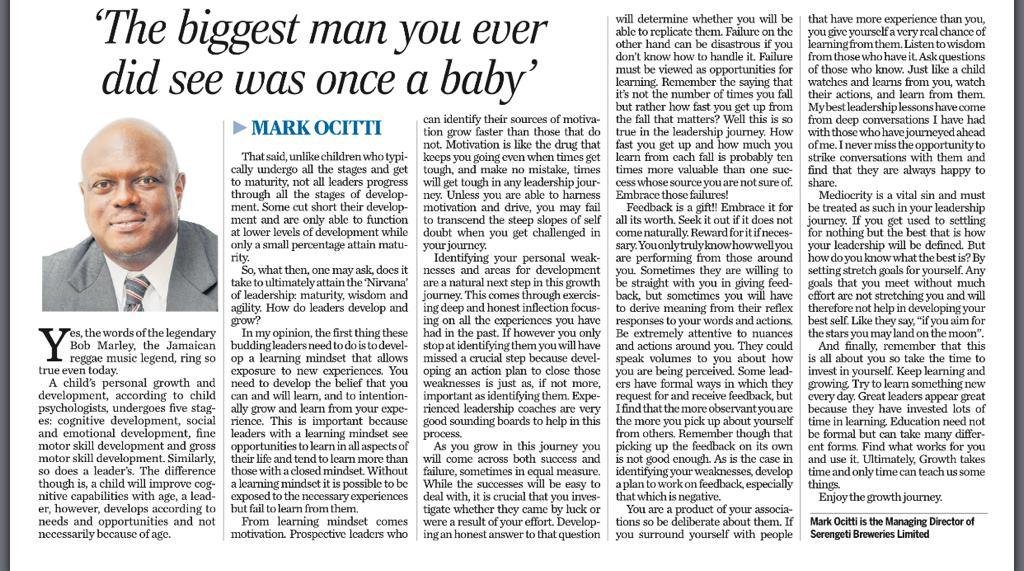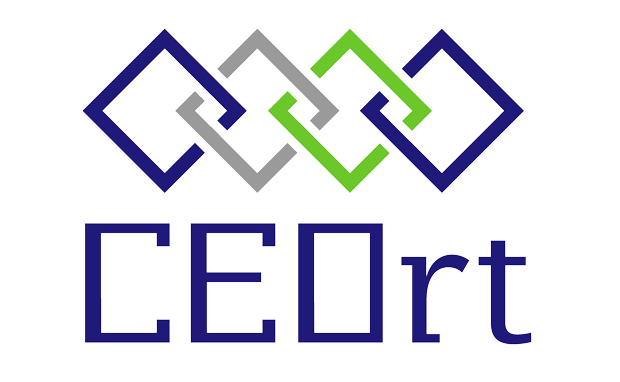
Yes, the words of the legendary Bob Marley, the Jamaican reggae music legend, ring so true even today.
A child’s personal growth and development, according to child psychologists, undergoes five stages: cognitive development, social and emotional development, fine motor skill development and gross motor skill development. Similarly, so does a leader’s.
The difference though is, a child will improve cognitive capabilities with age, a leader, however, develops according to needs and opportunities and not necessarily because of age.
That said, unlike children who typically undergo all the stages and get to maturity, not all leaders progress through all the stages of development.
Some cut short their development and are only able to function at lower levels of development while only a small percentage attain maturity. So, what then, one may ask, does it take to ultimately attain the ‘Nirvana’ of leadership: maturity, wisdom and agility.
How do leaders develop and grow? In my opinion, the first thing these budding leaders need to do is to develop a learning mindset that allows exposure to new experiences. You need to develop the belief that you can and will learn, and to intention- ally grow and learn from your experience.
This is important because leaders with a learning mindset see opportunities to learn in all aspects of their life and tend to learn more than those with a closed mindset. Advertisement
Without a learning mindset it is possible to be exposed to the necessary experiences but fail to learn from them. From learning mindset comes motivation. Prospective leaders who
can identify their sources of motiva- tion grow faster than those that do not.
Motivation is like the drug that keeps you going even when times get tough, and make no mistake, times will get tough in any leadership journey.
Unless you are able to harness motivation and drive, you may fail to transcend the steep slopes of self doubt when you get challenged in your journey.
Identifying your personal weaknesses and areas for development are a natural next step in this growth journey. This comes through exercising deep and honest inflection focusing on all the experiences you have had in the past.
If however you only stop at identifying them you will have missed a crucial step because developing an action plan to close those weaknesses is just as, if not more, important as identifying them. Experienced leadership coaches are very good sounding boards to help in this process.
As you grow in this journey you will come across both success and failure, sometimes in equal measure. While the successes will be easy to deal with, it is crucial that you investigate whether they came by luck or were a result of your effort. Developing an honest answer to that question
will determine whether you will be able to replicate them. Failure on the other hand can be disastrous if you don’t know how to handle it.
Failure must be viewed as opportunities for learning. Remember the saying that it’s not the number of times you fall but rather how fast you get up from the fall that matters? Well this is so true in the leadership journey.
How fast you get up and how much you learn from each fall is probably ten times more valuable than one success whose source you are not sure of. Embrace those failures! Feedback is a gift!! Embrace it for all its worth. Seek it out if it does not come naturally. Reward for it if necessary.
You only truly know how well you are performing from those around you. Sometimes they are willing to be straight with you in giving feed- back, but sometimes you will have to derive meaning from their reflex responses to your words and actions. Be extremely attentive to nuances and actions around you.
They could speak volumes to you about how you are being perceived. Some leaders have formal ways in which they request for and receive feedback, but I find that the more observant you are the more you pick up about yourself from others.
Remember though that picking up the feedback on its own is not good enough. As is the case in identifying your weaknesses, develop a plan to work on feedback, especially that which is negative.
You are a product of your associations so be deliberate about them. If you surround yourself with people
that have more experience than you, you give yourself a very real chance of learning from them.
Listen to wisdom from those who have it. Ask questions of those who know. Just like a child watches and learns from you, watch their actions, and learn from them.
My best leadership lessons have come from deep conversations I have had with those who have journeyed ahead of me.
I never miss the opportunity to strike conversations with them and find that they are always happy to share. Mediocrity is a vital sin and must be treated as such in your leadership journey. If you get used to settling for nothing but the best that is how your leadership will be defined.
But how do you know what the best is? By setting stretch goals for yourself. Any goals that you meet without much effort are not stretching you and will therefore not help in developing your best self.
Like they say, “if you aim for the stars you may land on the moon”. And finally, remember that this is all about you so take the time to invest in yourself. Keep learning and growing.
Try to learn something new every day. Great leaders appear great because they have invested lots of time in learning. Education need not be formal but can take many different forms. Find what works for you and use it. Ultimately, Growth takes time and only time can teach us some things. Enjoy the growth journey.
Source: The Citizen


